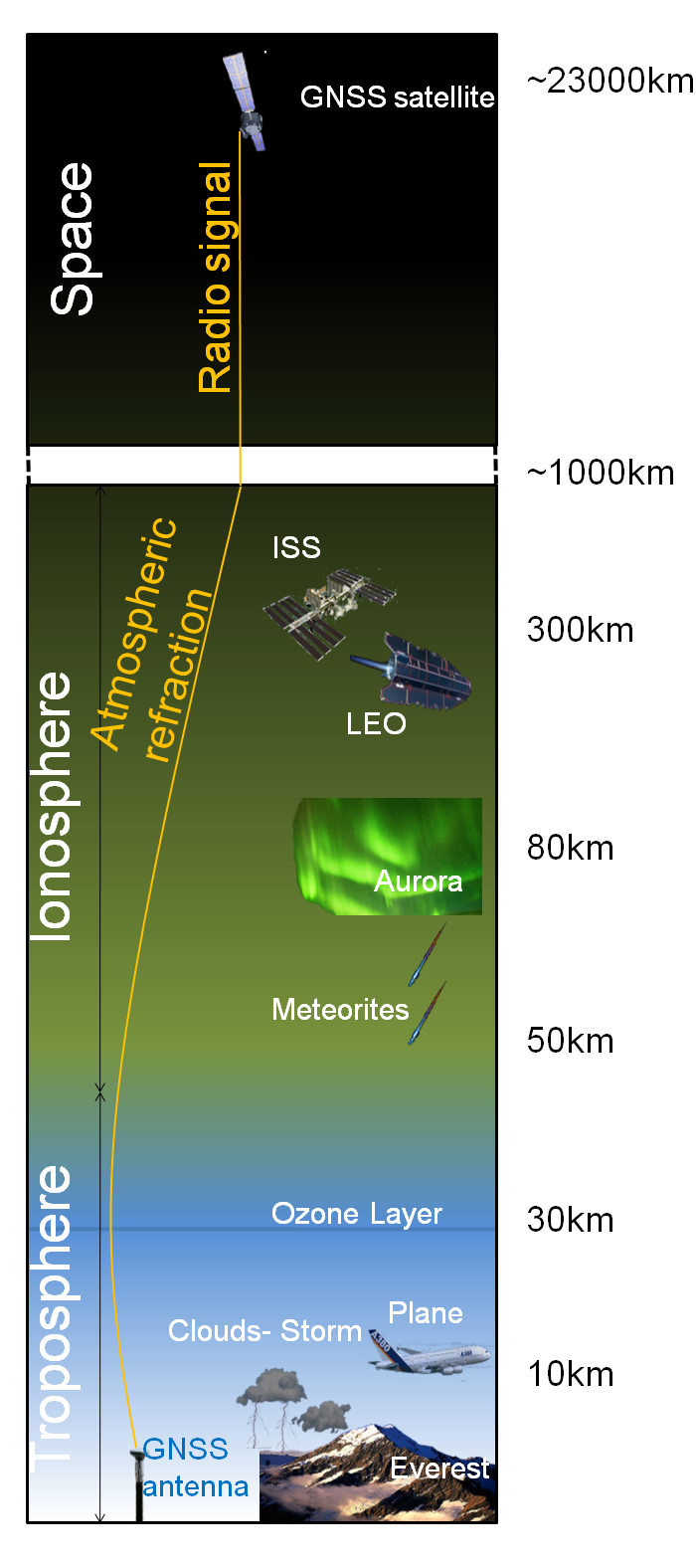Atmosphere
1. The Earth's Atmosphere

The Earth's atmosphere can be divided in two major parts for GNSS applications: troposphere and ionosphere.
Troposphere: The troposphere is the lowest region of Earth's atmosphere ranging from 0 to 50km. It is the seat of all meteorological phenomena's (clouds, rain, hydrometeors...) and contains approximately 75% of the atmosphere's mass and almost all (99%) of its water vapour and aerosols.
Ionosphere: The Earth ionosphere named so because it is ionized by solar radiation. The ionosphere is thus a shell of electrons and electrically charged atoms and molecules that surrounds the Earth, stretching from a height of about 50 km to more than 1000 km.
2. GNSS Signals and Earth's Atmosphere
When travelling from the GNSS satellites to the receiving antennas located on the Earth, the radio-frequency signals emitted by Global Navigation Satellite Systems (such as GPS, GLONASS and Galileo) traverse and interact with the Earth's atmosphere.
The two atmospheric layers that influence the propagation of GNSS signals are the troposphere and the ionosphere. As an electromagnetic wave propagates from a satellite towards the Earth surface, the wave crosses these atmospheric layers and interacts with them.
The main interaction that links the Earth atmosphere to the electromagnetic signal propagation is atmospheric refraction. Refraction is the phenomenon of the change of direction and speed of propagation of an electromagnetic wave as it passes from one medium to another. The atmospheric refraction effect on GNSS signals depends both on the effect of the neutral atmosphere and on the effect of the ionised part of the atmosphere.
3. The Error Introduced to GNSS Signals due to Atmospheric Refraction
Atmospheric delays are errors that need to be properly corrected or mitigated in order to
achieve high precision positioning or time and frequency transfer.
- Troposphere : from 2 to 10m
- Ionosphere : from 10-30m up to loss of lock
On the other hand, atmospheric delays estimated via GNSS data processing are an important source of information for scientific applications as well as for fundamental research on the atmosphere.

